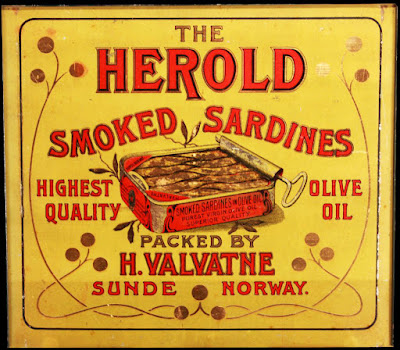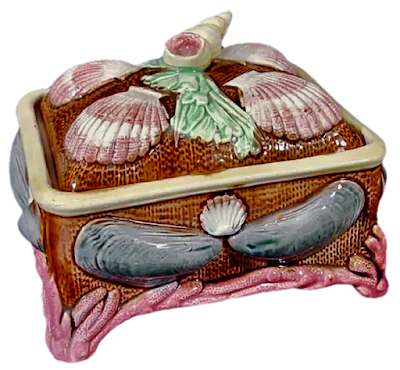Although sardine harvesting has gone on for thousands of years, the history of canned sardines is a relatively recent one. It began in England around 1810 when Englishman Peter Durand developed the first patent for preserving sterilized perishable foods in an enclosed container. In 1822 France, Joseph Collins, aware of the historic preservation of cooked sardines in clay jars in the Breton area of France during the reign of Napoleon, applied methods first developed to preserve sweets, to the fish industry creating the first canned fish. In 1853 the Chancerelle Cannery in Brittany became the first company to take advantage of the plentiful sardine stocks in the offshore waters to create the canned sardine market. Soon their success caught on ‘spawning’ small canneries around fishing ports throughout Europe and the United States.
These canned fish became popular with the military–particularly in America during the Civil War–where there was a need to feed nutritious food to traveling troops. In time, sardine’s popularity caught on everywhere resulting in a market that ultimately created millions of cans of sardines every year.
As sardines became the latest food novelty among the middle class, all manner of companies produced specialty products to serve them. No well equipped dining service was complete without special forks with which to serve sardines or special containers in which to highlight the delicacy.
Of course potteries picked up on the popularity of canned sardines and created their own decorative containers to sell to the upscale dining hostess. By the early 1870s sardine boxes became one of the most popular specialty items made by the Staffordshire potteries.
The variety of sardine boxes made by majolica manufacturers created a serving container for every taste. George Jones was a leading innovator in the process.
Wedgwood, whose largest majolica market was in the United States, made sardine boxes late into the Nineteenth Century, long after other large potteries ceased, sometimes with aquatic themes... and sometimes not.
There are many unattributed sardine boxes. Most are believed to be of British origin.
The sardine industry went into decline in Great Britain after the 1880s while the French sardine industry waxed and waned with fish supplies. Sardines though, remained popular worldwide until after WW2. The craze began to diminish by the 1950s. Because of their high Vitamin D content as well as their supply of “good” cholesterol they are still canned and enjoyed today though the market is no longer packed like sardines with devotees.
Sorry about that! I couldn't resist!








































































Hi. Great article and amazing photos. Do you have any pictures of the open boxes? And the sizes of the interiors? We're the designed to hold the actual can, dropped in, or were they just shaped like the can, and the contents stacked in there? Some seem square, but others are shaped like 20th century sardine cans. I'm really interested if there are standard sizes to distinguish a Staffordshire item from a soap dish or razor box, etc. Thanks so much. - Kemp Wills
ReplyDeleteI don't have photos of the interiors or the inside dimensions though some may be available online in auction or retail listings. Judging by the staining found on many of these box bases, my guess is that the can was not placed directly into the box but the contents were taken out of the can and placed into the ceramic container. The sizes of these boxes are similar but not identical or standardized.
Delete